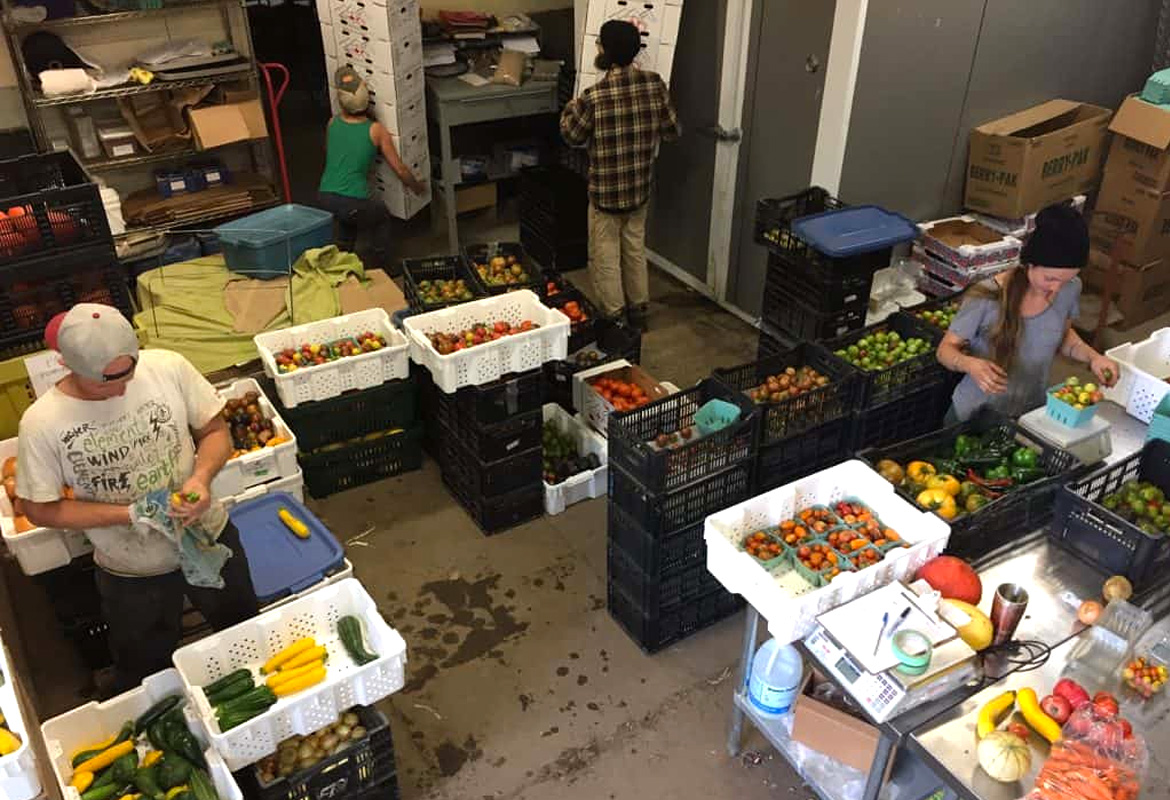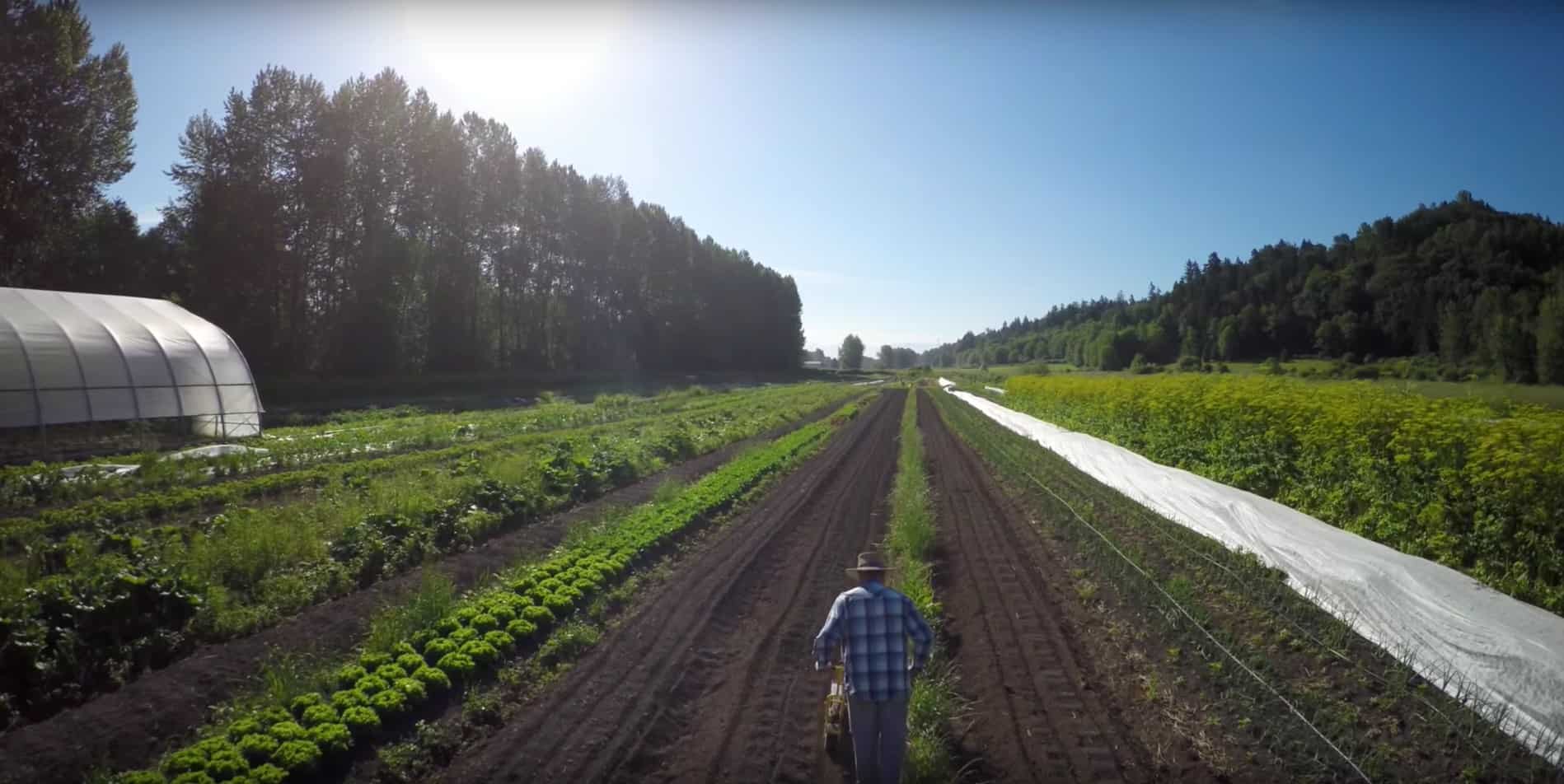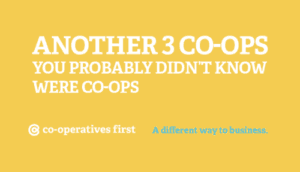Agriculture’s not an easy industry to break into. Start-up costs can be insurmountable; the cost of land alone puts farming out of reach for those who aren’t already in the sector. Starting a farm can seem impossible, because most people who farm inherit their land or had the support of family to purchase it. But co-ops can help farmers start their farm — the model has provided ways to make farming accessible for generations.
You don’t need to own land to start a farm
Chris Bodnar is a farmer and the owner, with his wife Paige, of Close to Home Organics in southern British Columbia. Close to Home grows fruit and vegetables that it sells at nearby farmers markets and through Community Supported Agriculture (CSA) subscription boxes.
Unlike many farmers, however, Bodnar doesn’t own the land on which he lives and works. The land is part of the Glen Valley Organic Farm Co-operative.
Located on 50 acres of beautiful, productive land along the Fraser River, Glen Valley Organic Farm is home to two businesses: Close to Home and Earth Apple Organic Farm. Bodnar’s family and the owners of Earth Apple also live on the property. About 12 acres are in full vegetable production, 22 acres are peat bog pasture, and eight acres are forest, which keep the valley slope in place and provide natural habitat.
Glen Valley used to be privately owned but has now been a co-operative for 20 years. When the previous owners wanted to sell the property, they didn’t want to just sell the land to the highest bidder – they wanted it to remain an organic farm, and continue to supply nearby customers with fresh, local produce.
A co-op was the solution.
Co-ops own land, so farmers can farm
The Glen Valley Organic Farm is a community service (ie. non-profit) co-op with around 50 members. Most of these members have purchased shares in the farm but don’t want to be farmers themselves: they just want to support small-scale local agriculture.
People become co-op members by purchasing one $5,000 share. The co-op is run by a board made up of members, including the farm’s business owners, giving them an active role in making decisions about the land.
“The one thing that’s interesting about the model is it’s the land and the assets on the land that are owned by the co-op, and us as farmers run our own businesses,” Bodnar said. “We lease the land from the co-op, but in order to be a tenant on the land we need to be a member of the co-op.
That provides us security in that decisions aren’t made by the co-op that impact us without our knowledge of what’s going on, and the actual intent of the people who are part of the co-op is to support people who want to farm on the property. Provided that we’re operating businesses that support the mission and vision of the co-op it’s a really good fit. So it provides us with long-term security on the land in housing, and at the same time we didn’t need massive capital or a mortgage to put into it.”

This access and security can be hard to find – especially in BC. Less than three per cent of BC’s land is farmable and the average cost of land was $151,000 per acre in 2016. This means those who want to start a farm need alternative models to get them on the land. Buying land outright is no longer an option for many.
“There are a lot of people who would love to get into agriculture and don’t necessarily have that support,” he said. “I think that that’s where there’s some additional thought both by the sector and from a policy perspective: what does it look like to support people to get in? There are a number of different positions that don’t involve owning a farm or owning land. It’s working within the sector where there’s a lot of opportunity.”
Co-operative farms have changed — but are still relevant
Co-operative farms have taken many forms. In the 1940s the model became popular with people who wanted to pool their land and resources, like families and veterans. In Saskatchewan, the government provided incentives for farming co-operatively: it gave free Crown lands, loans, and technical assistance.
Harold Chapman, a long-time co-op developer and advocate, incorporated a co-op farm with his family in 1945. In his memoirs he said it “solved problems that had been facing the family for a number of years. It provided a legal basis for the family to work together; everyone was able to specialize in areas of interest, and machinery could be used more efficiently”.
After his family’s success with a co-op, Chapman was inspired to support other groups in the province to create co-op farms. He worked with WWII veterans to start the Matador Co-op Farm near Kyle, Saskatchewan with Crown land allocated under the Veteran’s Land Act. The original 17 veteran members lived on the farm – houses were constructed for the four married veterans, and the other, single, members lived in a dormitory. The members farmed together, and as more members got married the number of single-family houses grew.

Co-op farms continued to spring up around the province in the following years: by 1952 there were 32.
Chapman recalled the strengths of co-op farms at that time:
“The co-operative farms helped younger people… to get established in farming and build up their equity in the organization, and enabled all members to benefit from the aptitudes and training of members in such areas as mechanics and care of livestock. Working in shifts encouraged maximum use of equipment and the keeping of regular hours. The members were also able to take holidays in summer or winter.”
The co-op model has been used in other ways to allow people to farm collectively. Another model that was popular in the prairies in the 40s and 50s – and still is in France and Quebec today – is used to share equipment and labour costs among farmers.
The post-war-style co-op farms are now gone – but that doesn’t mean co-op farms are obsolete. As Dr. Brett Fairbairn said, “co-ops reflect their times”: the model doesn’t go out of fashion, but changes to fit the contemporary economy.

How co-ops can get producers started now (and in the future)
As the agriculture sector evolves, even Glen Valley’s model may no longer work to start a co-op farm today (at least in BC’s Lower Mainland). Rising land prices mean that the 50 acres purchased 20 years ago for $500,000 is likely worth over $2 million now. That’s a lot of $5,000 shares.
As always, though, the co-op model can be used to respond in new ways.
The Foodlands Co-operative of BC was founded in 2017 in response to the high cost of land, and the desire to protect farmland from being purchased and developed for other uses. This co-op takes the idea of a land trust – usually used to preserve natural habitats – and applies it to land used to grow food.
Heather Pritchard with the co-operative land trust describes the system they’re building as having overlapping circles, “like the Olympic rings”. One ring is the Foodlands Co-op, which protects farmland by holding it in trust. An overlapping circle is community co-ops that manage the land and lease it out to those who want to farm. Another circle: the farm businesses that lease land from the co-ops.
Retiring producers want to see new people starting to farm
And where does the land come from? So far, some farmers who own land and are making succession plans have actually donated their farms to the land trust.
“One of the primary questions I ask [farmers] is ‘what do you want to happen with your land after you pass away?” Pritchard said. “What kind of compensation do you need, what’s fair to you? In the case of the two farms we’re looking at right now those are totally donated. It’s allowed us to work out how we do this, because we don’t have to fundraise to buy them.”
Farmers giving up their land see value in knowing that it will remain farmland after they’re gone. They like that they can have a say in what it will be used for, even when they are no longer farming.
Bodnar, who has been working with the land trust co-op, said it “blows [his] mind” that people are willing to donate their land once they retire.
“We just have to come up with the right model that works for them tax-wise and estate planning-wise and that works for holding it and understanding that as a land trust it won’t be subject to the same benefits of an ecological land trust, but it’s workable.”
Key ingredients to co-op farming: communication and determination
What links the co-op farm model across time and economies is the importance of people skills. No matter the structure of a co-op farm, communication between members and the ability to resolve conflicts is a major part of its success.
Luckily, said Bodnar, coordination on co-op farms isn’t that different from family farms – and you have more ability to choose your business partners.
“I don’t think the challenges from the people skills side are as unique as people make them out to be,” he said. “I think ultimately one of the challenges that comes about is simply the capital and financing as land prices continue to increase. We really have to look at alternative land-holding models, and there are going to be opportunities and challenges with that.
I think that our farm, 20 years in, we’ve been through ups and downs and we’re still there, and it comes down to some of the determination. If you want to farm you figure out ways to make that happen.”
Have an idea for a co-op farm? Get in touch, or check out our resources.




